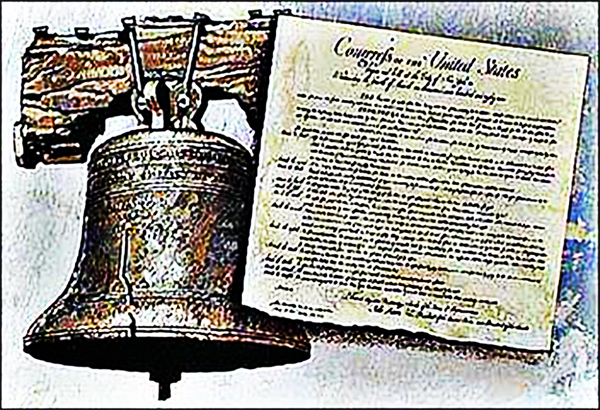
Liberty Bell tolls to announce Declaration of Independence on July 06, 1776
Liberty Bell tolls to announce Declaration of Independence: On this day in 1776, a 2,000-pound copper-and-tin bell now known as the “Liberty Bell” rings out from the tower of the Pennsylvania State House (now Independence Hall) in Philadelphia, summoning citizens to the first public reading of the Declaration of Independence. Four days earlier, the historic document had been adopted by delegates to the Continental Congress, but the bell did not ring to announce the issuing of the document until the Declaration of Independence returned from the printer on July 8.
In 1751, to commemorate the 50-year anniversary of Pennsylvania’s original constitution, the Pennsylvania Provincial Assembly ordered the bell to be constructed. After being cracked during a test, and then recast twice, the bell was hung from the State House steeple in June 1753. Rung to call the Pennsylvania Assembly together and to summon people for special announcements and events, it was also rung on important occasions, such as King George III’s 1761 ascension to the British throne and, in 1765, to call the people together to discuss Parliament’s controversial Stamp Act. With the outbreak of the American Revolution in April 1775, the bell was rung to announce the battles of Lexington and Concord. Its most famous tolling, however, was on July 8, 1776, when it summoned Philadelphia citizens for the first reading of the Declaration of Independence.
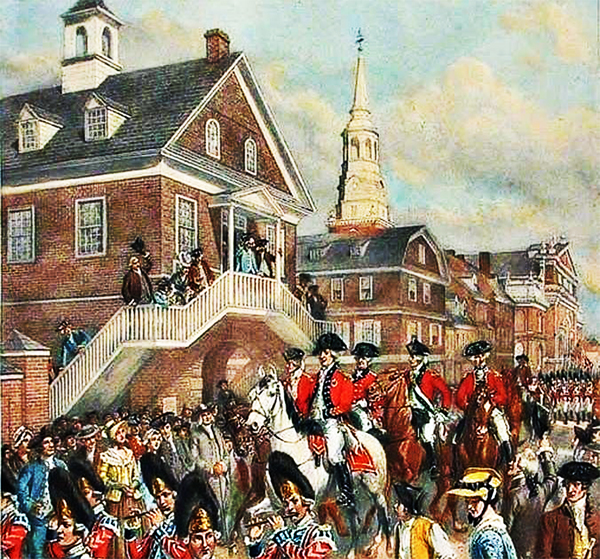
As the British advanced toward Philadelphia in the fall of 1777, the bell was removed from the city and hidden in Allentown to save it from being melted down by the British and used to make cannons. After the British defeat in 1781, the bell was returned to Philadelphia, which served as the nation’s capital from 1790 to 1800. In addition to marking important events, the bell tolled annually to celebrate George Washington’s birthday on February 22 and the Fourth of July. The name “Liberty Bell” was first coined in an 1839 poem in an abolitionist pamphlet.
The question of when the Liberty Bell acquired its famous fracture has been the subject of a good deal of historical debate. In the most commonly accepted account, the bell suffered a major break while tolling for the funeral of the chief justice of the United States, John Marshall, in 1835, and in 1846 the crack expanded to its present size while in use to mark Washington’s birthday. After that date, it was regarded as unsuitable for ringing, but it was still ceremoniously tapped on occasion to commemorate important events. On June 6, 1944, when Allied forces invaded France, the sound of the bell’s dulled ring was broadcast by radio across the United States.
History Channel / Wikipedia / Encyclopedia Britannica /
U.S. History.org / Constitution Center.org / National Parks Service /
Philadelphia Encyclopedia.org / Liberty Bell Museum.org / Smithsonian /
Liberty Bell tolls to announce Declaration of Independence on July 06, 1776 (YouTube) 
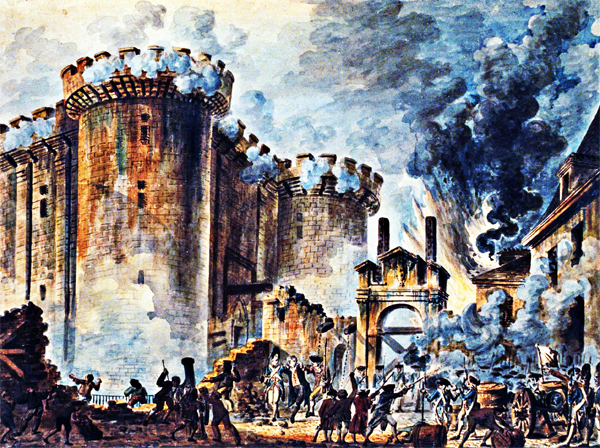
French revolutionaries storm the Bastille on July 14, 1789
French revolutionaries storm the Bastille: Parisian revolutionaries and mutinous troops storm and dismantle the Bastille, a royal fortress and prison that had come to symbolize the tyranny of the Bourbon monarchs.
This dramatic action signaled the beginning of the French Revolution, a decade of political turmoil and terror in which King Louis XVI was overthrown and tens of thousands of people, including the king and his wife Marie Antoinette, were executed.
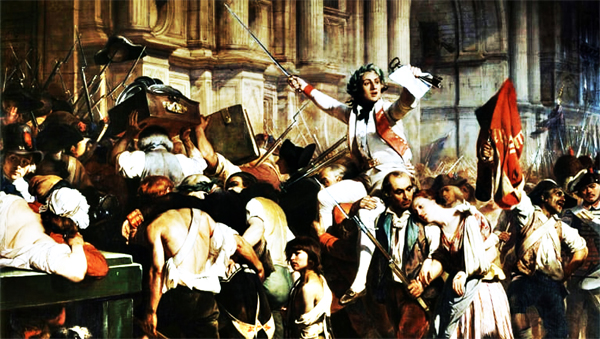
By the summer of 1789, France was moving quickly toward revolution. Bernard-René Jordan de Launay, the military governor of the Bastille, feared that his fortress would be a target for the revolutionaries and so requested reinforcements.
On July 12, royal authorities transferred 250 barrels of gunpowder to the Bastille, and Launay brought his men into the massive fortress and raised its two drawbridges.
At dawn on July 14, a great crowd armed with muskets, swords, and various makeshift weapons began to gather around the Bastille. Launay’s men were able to hold the mob back, but as more and more Parisians were converging on the Bastille, Launay raised a white flag of surrender over the fortress.
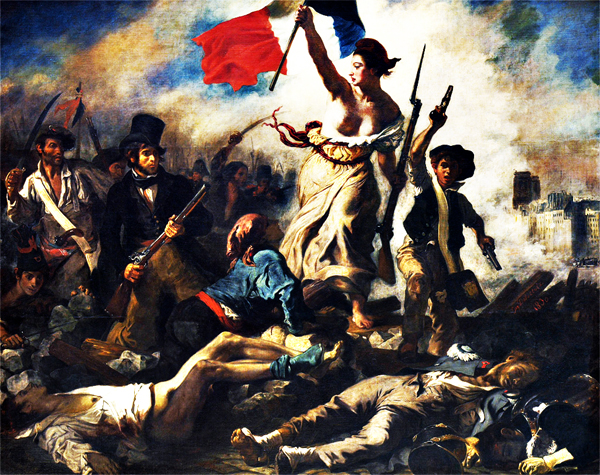
Launay and his men were taken into custody, the Bastille’s gunpowder and cannons were seized, and the seven prisoners were freed. Upon arriving at the Hotel de Ville, where Launay was to be arrested and tried by a revolutionary council, he was instead pulled away by a mob and murdered.
The capture of the Bastille symbolized the end of the ancien regime and provided the French revolutionary cause with an irresistible momentum. In 1792, the monarchy was abolished and Louis and his wife Marie Antoinette were sent to the guillotine for treason in 1793.
History Channel / Wikipedia / Encyclopedia Britannica /
Open.edu / Library Point.org / Library Of Congress /
National Archives.gov.UK / Monticello.org / Smithsonian /
French revolutionaries storm the Bastille on July 14, 1789 (YouTube) 
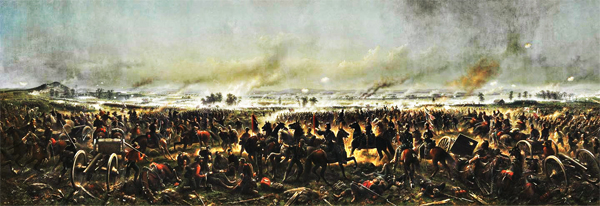
American Civil War: The Battle of Gettysburg begins on July 01, 1863
The Battle of Gettysburg begins: The Battle of Gettysburg, fought from July 1 to July 3, 1863, is considered the most important engagement of the American Civil War.
After a great victory over Union forces at Chancellorsville, General Robert E. Lee marched his Army of Northern Virginia into Pennsylvania in late June 1863. On July 1, the advancing Confederates clashed with the Union’s Army of the Potomac, commanded by General George G. Meade, at the crossroads town of Gettysburg.
The next day saw even heavier fighting, as the Confederates attacked the Federals on both left and right. On July 3, Lee ordered an attack by fewer than 15,000 troops on the enemy’s center at Cemetery Ridge. The assault, known as “Pickett’s Charge”, managed to pierce the Union lines but eventually failed, at the cost of thousands of rebel casualties, and Lee was forced to withdraw his battered army toward Virginia on July 4.
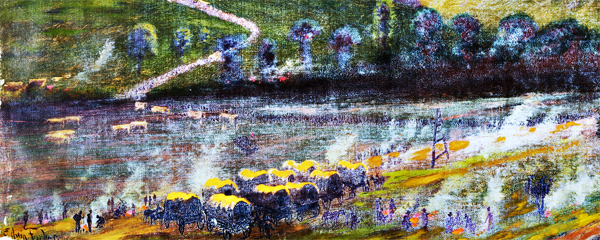
Battle of Gettysburg: Lee’s Invasion of the North
In May 1863, Robert E. Lee’s Confederate Army of Northern Virginia had scored a smashing victory over the Army of the Potomac at Chancellorsville. Brimming with confidence, Lee decided to go on the offensive and invade the North for a second time (the first invasion had ended at Antietam the previous fall). In addition to bringing the conflict out of Virginia and diverting northern troops from Vicksburg, where the Confederates were under siege, Lee hoped to gain recognition of the Confederacy by Britain and France and strengthen the cause of northern “Copperheads” who favored peace.
On the Union side, President Abraham Lincoln had lost confidence in the Army of the Potomac’s commander, Joseph Hooker, who seemed reluctant to confront Lee’s army after the defeat at Chancellorsville. On June 28, Lincoln named Major General George Gordon Meade to succeed Hooker. Meade immediately ordered the pursuit of Lee’s army of 75,000, which by then had crossed the Potomac River into Maryland and marched on into southern Pennsylvania.
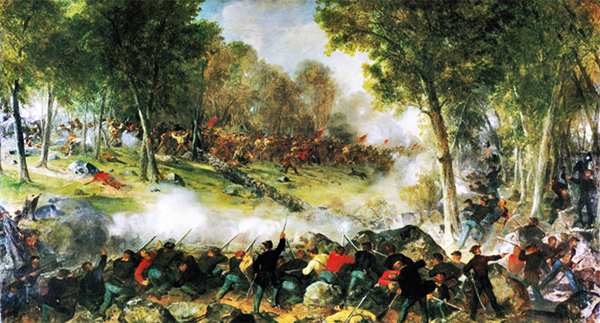
Battle of Gettysburg, Day 1: July 1st
Upon learning that the Army of the Potomac was on its way, Lee planned to assemble his army in the prosperous crossroads town of Gettysburg, 35 miles southwest of Harrisburg, Pennsylvania. One of the Confederate divisions in A.P. Hill’s command approached the town in search of supplies early on July 1, only to find that two Union cavalry brigades had arrived the previous day. As the bulk of both armies headed toward Gettysburg, Confederate forces (led by Hill and Richard Ewell) were able to drive the outnumbered Federal defenders back through town to Cemetery Hill, located a half mile to the south.
Seeking to press his advantage before more Union troops could arrive, Lee gave discretionary orders to attack Cemetery Hill to Ewell, who had taken command of the Army of Northern Virginia’s Second Corps after Lee’s most trusted general, Thomas J. “Stonewall” Jackson, was mortally wounded at Chancellorsville. Ewell declined to order the attack, considering the Federal position too strong; his reticence would earn him many unfavorable comparisons to the great Stonewall. By dusk, a Union corps under Winfield Scott Hancock had arrived and extended the defensive line along Cemetery Ridge to the hill known as Little Round Top; three more Union corps arrived overnight to strengthen its defenses.
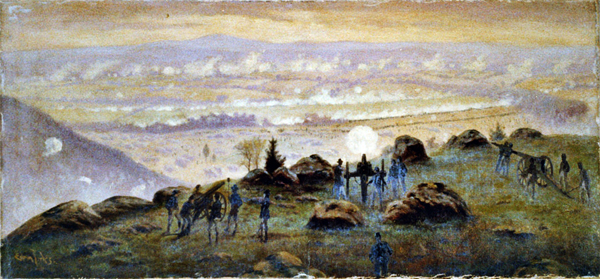
Battle of Gettysburg, Day 2: July 2nd
As the next day dawned, the Union Army had established strong positions from Culp’s Hill to Cemetery Ridge.
Lee assessed his enemy’s positions and determined - against the advice of his defensively minded second-in-command, James Longstreet - to attack the Federals where they stood. He ordered Longstreet to lead an attack on the Union left, while Ewell’s corps would strike the right, near Culp’s Hill. Though his orders were to attack as early in the day as possible, Longstreet didn’t get his men into position until 4 pm, when they opened fire on the Union corps commanded by Daniel Sickles.
Over the next several hours, bloody fighting raged along Sickles’ line, which stretched from the nest of boulders known as Devil’s Den into a peach orchard, as well as in a nearby wheat field and on the slopes of Little Round Top. Thanks to fierce fighting by one Maine regiment, the Federals were able to hold Little Round Top, but lost the orchard, field and Devil’s Den; Sickles himself was seriously wounded. Ewell’s men had advanced on the Union forces at Culp’s Hill and East Cemetery Hill in coordination with Longstreet’s 4 pm attack, but Union forces had stalled their attack by dusk. Both armies suffered extremely heavy losses on July 2, with 9,000 or more casualties on each side. The combined casualty total from two days of fighting came to nearly 35,000, the largest two-day toll of the war.
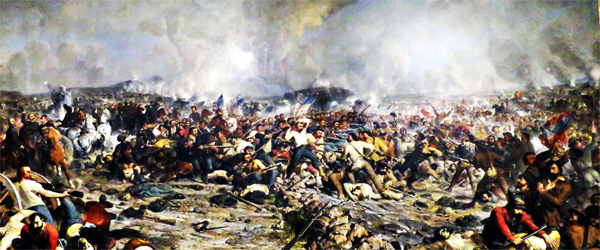
Battle of Gettysburg, Day 3: July 3rd
Early on the morning of July 3, Union forces of the Twelfth Army Corps pushed back a Confederate threat against Culp’s Hill after a seven-hour firefight and regained their strong position. Believing his men had been on the brink of victory the day before, Lee decided to send three divisions (preceded by an artillery barrage) against the Union center on Cemetery Ridge. Fewer than 15,000 troops, led by a division under George Pickett, would be tasked with marching some three-quarters of a mile across open fields to attack dug-in Union infantry positions.
Despite Longstreet’s protests, Lee was determined, and the attack–later known as “Pickett’s Charge” - went forward around 3 pm, after an artillery bombardment by some 150 Confederate guns. Union infantry opened fire on the advancing rebels from behind stone walls, while regiments from Vermont, New York and Ohio hit both of the enemy’s flanks. Caught from all sides, barely half of the Confederates survived, and Pickett’s division lost two-thirds of its men. As the survivors stumbled back to their opening position, Lee and Longstreet scrambled to shore up their defensive line after the failed assault.
Battle of Gettysburg: Aftermath and Impact
His hopes of a victorious invasion of the North dashed, Lee waited for a Union counterattack on July 4, but it never came. That night, in heavy rain, the Confederate general withdrew his decimated army toward Virginia. Though the cautious Meade would be criticized for not pursuing the enemy after Gettysburg, the battle was a crushing defeat for the Confederacy. Union casualties in the battle numbered 23,000, while the Confederates had lost some 28,000 men–more than a third of Lee’s army. The North rejoiced while the South mourned, its hopes for foreign recognition of the Confederacy erased.
Demoralized by the defeat at Gettysburg, Lee offered his resignation to President Jefferson Davis, but was refused. Though the great Confederate general would go on to win other victories, the Battle of Gettysburg (combined with Ulysses S. Grant’s victory at Vicksburg, also on July 4) irrevocably turned the tide of the Civil War in the Union’s favor.
History Channel / Wikipedia / Encyclopedia Britannica /
American Battlefields.org / Library Of Congress.gov / Encyclopedia Virginia.org /
National Archives.gov / Smithsonian / The Atlantic /
American Civil War: The Battle of Gettysburg begins on July 01, 1863 (YouTube) 
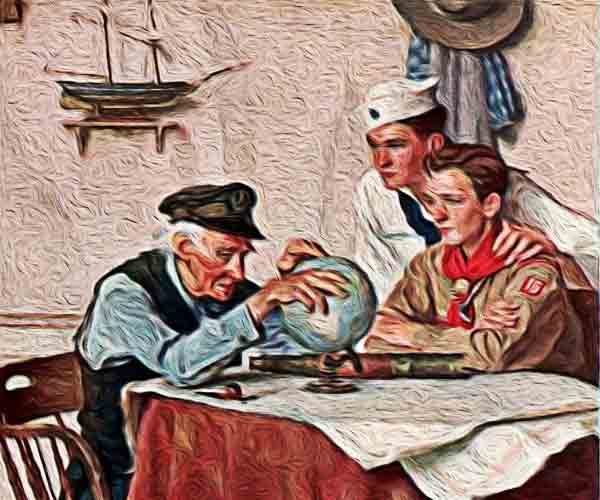
Understanding Military Terminology
Regional Air Defense Commander
(DOD) Commander, subordinate to the area air defense commander, who is responsible for air and missile defenses in the assigned region and exercises authorities as dele gated by the area air defense commander.
Also called RADC.
Joint Publications (JP 3-01) Countering Air and Missile Threats
Regional Response Coordination Center
(DOD) A standing facility that is activated to coordinate regional response efforts, un til a joint field office is established and/or the principal federal official, federal or coordinating officer can assume their National Response Framework coordination responsibilities.
Also called RRCC.
Joint Publications (JP 3-28) Defense Support of Civil Authorities
Regional Satellite Communications Support Center
(DOD) United States Strategic Command operational element responsible for providing the operational communications planners with a point of contact for accessing and managing satellite communications resources.
Also called RSSC.
Joint Publications (JP 3-14) Space Operations, CH 1, 26 October 2020
Regional Security Officer
(DOD) A security officer responsi ble to the chief of mission (ambassador), for security functions of all United States embassies and consulates in a given country or group of adjacent countries
Also called RSO.
Joint Publications (JP 3-10) Joint Security Operations in Theater
Joint Publication - Department of Defense Dictionary of Military and Associated Terms
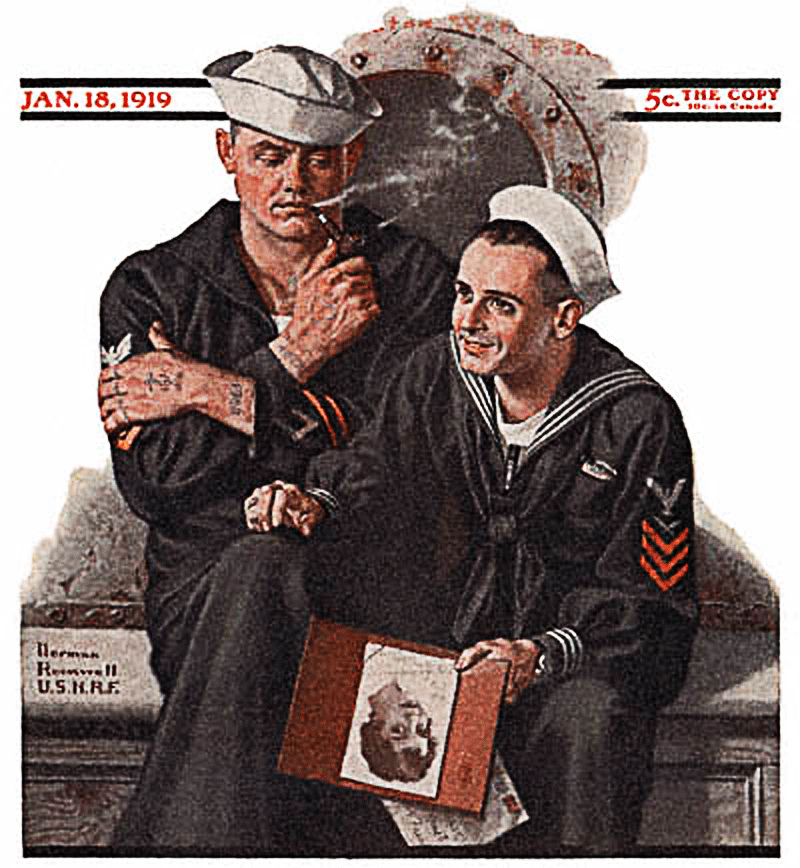
The Old Salt’s Corner
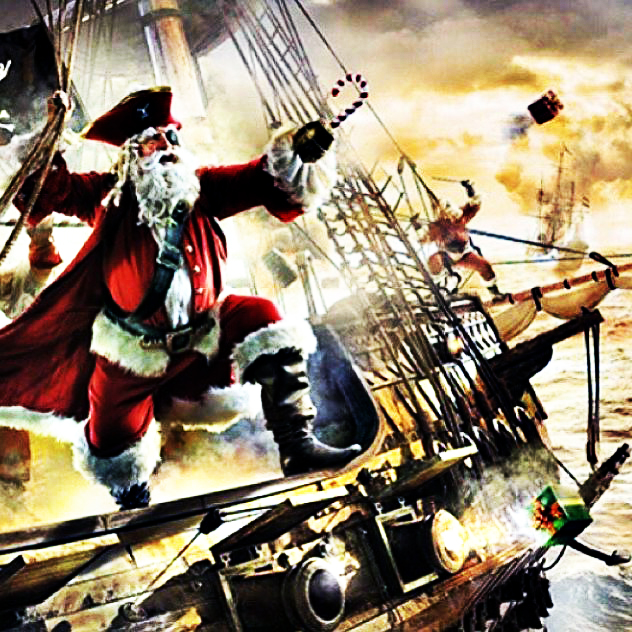
“SAILOR'S CHRISTMAS”
Twas the night before Christmas a calm night at sea
We nestled in our racks for a Holiday Routine
When from the ventilation there came such a clatter
We jumped from our bunks to see what's the matter.
When from the vent fell this big dust covered dude
He was dressed up in red with a bad attitude
Yelling, “Those ducts are all filthy!” as he brushed off his clothes.
“Don't just damn stand there, where's the DCPO?”
He arose form the deck, then he peered all around.
Then from his mouth came a bellowing sound
“This berthing's a disgrace!” then he called us by name
“Now Boatswain, Now Corpsman, please explain!”
This was not the Santa I remembered from youth
He smelled of cheap whiskey, he was rough and uncouth
“Now, look here you bastards” he said as he strolled
“You'd best trice this place up, or you'll get nothing but coal!”
“You'll make this space pretty, military, and neat!”
Then he looked down at our boots that lay right near his feat
“Well, what do we have here?” He said with a frown
“Who the hell polished these? Recruit 'Buster brown'?!”
He walked around slowly, he missed not a mark
He even spotted dust bunnies, right there in the dark!
“You've got high dust and low dust, and that overhead it needs cleaning!”
We all stood dumbfounded as his words kept on streaming
“Which man here is senior!?” Then asked St Nick
“You'd better shit me and answer…and SHIT ME ONE QUICK!”
The First Class stepped forward, his heart pounding hard.
“Now look right here shitbirds, this asshole's in charge!”
“These racks will be tight! This damn deck it will shine!
I don't want to hear bitching! I need not hear you whine!”
So we gathered our foxtales, our buckets, and swabs
We all worked all in silence to finish the job.
It took almost an hour finish our space
He just sat drinking coffee and stuffing his face
Then on re-inspection he explained with a huff
“Now this is more like it! Now your not so screwed up!”
We all stood there smiling, awaiting our gifts
But Santa just snapped out “What's the matter dumb-shits!?”
“Get back to your racks! This will be my last warning!
Just like on shore, the gifts come in the morning!”
It seemed like eternity until reveille sounded
We threw back our curtains as all our hearts pounded
But what were our gifts? For what did we suffer?
A pallet of rags and a shiny new buffer!
Attached to our new buffer, we found a short note
We all gathered 'round to see what he wrote
“Next year at Christmas, best have all your shit wired!”
~ Signed: Fair Winds S.C. Clause BMCM (Retired)

“I’m Just Sayin”
“No man or woman who tries to pursue an ideal in his or her own way is without enemies.”
“Opinions differ most when there is least scientific warrant for having any.”
“The man who never makes a mistake always takes orders from one who does.
No man or woman who tries to pursue an ideal in his or her own way is without enemies.”
~ Daisy Bates

“Thought for the Day”
“Guests, like fish, begin to smell after three days.”
“An investment in knowledge pays the best interest.”
“Early to bed and early to rise makes a man healthy, wealthy and wise.”
“A place for everything, everything in its place.”
“If passion drives you, let reason hold the reins.”
“He that is good for making excuses is seldom good for anything else.”
“Any fool can criticize, condemn and complain - and most fools do.”
“He who falls in love with himself will have no rivals.”
“In this world nothing can be said to be certain,
except death and taxes.”
“Without freedom of thought,
there can be no such thing as wisdom -
and no such thing as public liberty without freedom of speech.”
“We must, indeed,
“all hang together or, most assuredly,
we shall all hang separately.”
“Be at war with your vices,
at peace with your neighbors,
and let every new year find you a better man.”
“Tell me and I forget.
Teach me and I remember.
Involve me and I learn.”
~ Benjamin Franklin

“What I Learned”
“It is better to keep your mouth closed and let people think you are a fool than to open it and remove all doubt.”
“The secret of getting ahead is getting started.”
“There are lies, damned lies and statistics.”
“The human race has one really effective weapon, and that is laughter.”
“Denial ain't just a river in Egypt.”
“It's not the size of the dog in the fight,
it's the size of the fight in the dog.”
“All you need in this life is ignorance and confidence,
and then success is sure.”
“Whenever you find yourself on the side of the majority,
it is time to pause and reflect.”
“The fear of death follows from the fear of life.
A man who lives fully is prepared to die at any time.”
“If it's your job to eat a frog,
it's best to do it first thing in the morning.
And If it's your job to eat two frogs,
it's best to eat the biggest one first.”
~ Mark Twain
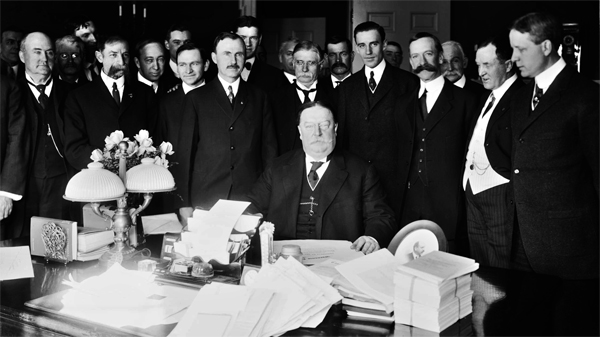
Mr. Answer Man Please Tell Us: Can a Person Refuse a Presidential Pardon?
Presidential pardons have been in the news, which has led to an onslaught of questions about just how far a president's pardoning powers extend - and what would happen if the person being offered the pardon declined it altogether? Is such a thing even possible, or does the pardoned individual in question have no choice in the matter? Believe it or not, it's an issue that has come up a few times over the past two centuries - and the answer isn't exactly a clear-cut one.
To fully answer the question, first an important distinction has to be made between commutation and pardoning. Both are part of the pardoning powers given to the president, but differ in levels. Speaking to ABC News, Randy Barnett, a professor at Georgetown University, explained
“Pardon is an ‘executive forgiveness of crime’; commutation is an “executive lowering of the penalty.” And the answer to the question depends on that distinction.
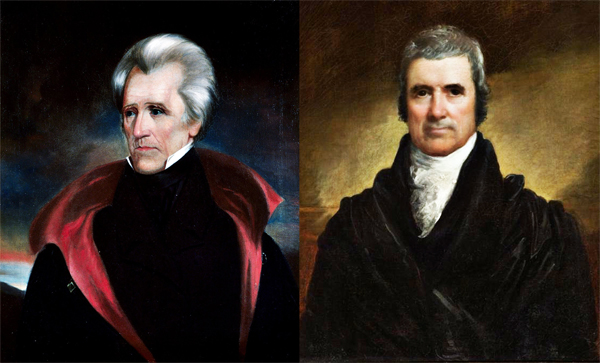
UNITED STATES V. WILSON
In 1833, the Supreme Court heard the case of the United States v. George Wilson. On May 27, 1830, Wilson and co-conspirator James Porter were both sentenced to death after being convicted of robbing a U.S. postal worker and putting the carrier’s life in jeopardy. While Porter was executed just over a month later, on July 2, 1830, Wilson managed to escape the sentence.
President Andrew Jackson decided to pardon Wilson for the death penalty charge on the understanding that he had yet to be sentenced for other crimes (for which he was looking at a minimum of 20 years). For some reason Wilson waived the pardon,
possibly because of confusion about what case he was being tried for at the time and what cases the pardon was for.
In 1833, the Supreme Court ultimately weighed in on the issue, ruling
“A pardon is a deed, to the validity of which delivery is essential, and delivery is not complete without acceptance. It may then be rejected by the person to whom it is tendered, and if it be rejected, we have discovered no power in a court to force it on him.” (Strangely, the details of whether or not Wilson was ever executed are lost to time.)
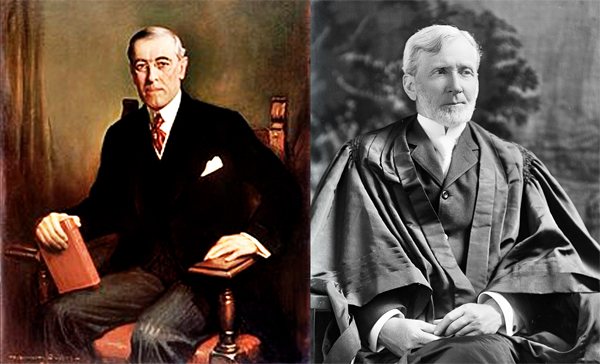
BURDICK V. UNITED STATES
This right of refusal was affirmed in 1915. George Burdick, city editor of the New York Tribune, refused to testify regarding sources for articles on alleged custom fraud by invoking his
Fifth Amendment rights (PDF).
President Woodrow Wilson then gave a pardon to Burdick, protecting him from any charge he may incriminate himself of during his testimony.
The idea behind the pardon was to force Burdick to testify, under the theory that he could no longer be convicted for any acts he may reveal. But Burdick rejected the pardon, continued to invoke his rights, and was found guilty of contempt.
The Supreme Court ruled that Burdick was within his rights to refuse the pardon and as such he did not lose his Fifth Amendment rights.
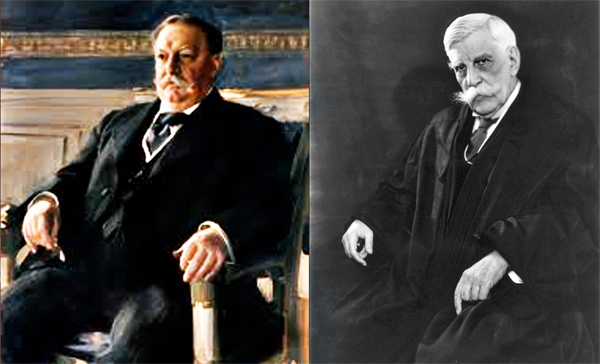
BIDDLE V. PEROVICH
A 1927 ruling added a new wrinkle to the pardoning issue. In 1905, Vuco Perovich was sentenced to hang for murder, which President Taft commuted to life imprisonment a few years later.
Perovich was then transferred from Alaska to Washington, and later to Leavenworth. Perovich eventually filed an application for writ of habeas corpus, claiming that his commutation was done without his consent.
The Supreme Court ultimately ruled that “the convict’s consent is not required”.
This ruling has led decades of legal scholars to wonder if the Perovich ruling overturned these earlier cases, with Supreme Court Justice Oliver Wendell Holmes Jr. arguing:
“Whether these words sound the death knell of the acceptance doctrine is perhaps doubtful. They seem clearly to indicate that by substantiating a commutation order for a deed of pardon, a President can always have his way in such matters, provided the substituted penalty is authorized by law and does not in common understanding exceed the original penalty” [The Pardoning Power of Article II of the Constitution (continued)].
In other words: You may be able to refuse a pardon, but you would not be able to refuse a commutation.
Mental Floss
• Frequently asked questions
- Justice.gov
• Brookings.edu
• William & Mary Law Review - Scholarship.law.wm.edu
• United States Department of Justice.gov
• Wikipedia
/ Can a Person Refuse a Presidential Pardon? (YouTube) 

NAVSPEAK aka U.S. Navy Slang
VA Veterans Administration / Department of Veterans Affairs: A department of the U.S. Federal Government that assists military veterans with medical care, educational benefits for college of technical training, home loans, burial.
VA: Fixed wing attack Aircraft Squadrons. No longer in use, see VFA
VAQ: Fixed Wing Electronic Attack aircraft Squadrons.
VAW: Fixed Wing Carrier Airborne Early Warning aircraft Squadrons.
Vampire Liberty: A day off one gets for donating a pint of blood.
VASTARD: Sailors that work with the AN/USM247(V) Versatile Avionics Shop Test (VAST) operational from 1972-2006.
Used for testing Weapons Replaceable Assemblies (WRA's) on E-2C Hawkeyes, F-14 Tomcats, and S-3 Vikings.
Typically these shops are found on aircraft carriers just forward of hangar bay 1 on the 01 level. Part of the Aircraft Intermediate Maintenance Department (AIMD), IM3 (Avionics) division.
VBSS: Visit, Board, Search, Seizure: Marinetime boarding actions and tactics.
Wiktionary.org

Just for you MARINE
VERTREP: Vertical Rreplenishment, the use of helicopters for cargo transfer to ships or distant outposts.
VEERP: Voluntary Enlisted Early Release Program, getting out of the Marine Corps early.
Voluntold: Being volunteered for a task without having a choice by a superior.
VTOL: Vertical TakeOff/Landing, takeoff and landing technique that does not need a runway to become airborne. See also STOL, STOVL, & V/STOL.
V/R: Very Respectfully, used as an end greeting in written naval communication to senior.
V/STOL: Vertical/Short Takeoff and Landing, a type of aircraft that can perform: STOL, STOVL, & VTOL.
Wikipedia.org

Naval Aviation Squadron Nicknames
VX-31 Naval Aviation Squadron Nicknames: Air Test and Evaluation (VX) Squadron THREE ONE - nicknamed the “Dust Devils”
United States Navy - Unmanned Aircraft Systems Test Directorate - China Lake, Ridgecrest, California. / May 08, 1995 - May 01, 2002, VX-31: October 17, 2018 / May 01, 2002 - present
Wikipedia.org

Where Did That Saying Come From?

“An apple a day keeps the doctor away:”
Meaning: The proverb 'An apple a day keeps the doctor away' has a straightforward literal, and very probably correct, meaning - that the eating of fruit maintains good health.
History: It isn't often that I get the opportunity to list Wales as the source of a commonplace English phrase. There's a fair chance that this little maxim originated there as the earliest known example of its use in print makes that claim. The February 1866 edition of Notes and Queries magazine includes this:
“A Pembrokeshire proverb. Eat an apple on going to bed, And you'll keep the doctor from earning his bread.”
A number of variants of the rhyme were in circulation around the turn of the 20th century. In 1913, Elizabeth Wright recorded a Devonian dialect version and also the first known mention of the version we use now, in Rustic Speech and Folk-lore:
“Ait a happle avore gwain to bed, An' you'll make the doctor beg his bread; or as the more popular version runs: An apple a day Keeps the doctor away.”
Apples have a good claim to promote health. They contain Vitamin C, which aids the immune system, and phenols, which reduce cholesterol. They also reduce tooth decay by cleaning one's teeth and killing off bacteria. It has also been suggested by Cornell University researchers that the quercetin found in apples protects brain cells against neuro-degenerative disorders like Alzheimer's Disease.
Apples may be good for us but it wasn't their precise medicinal properties that were being exalted when this phrase was coined. In Old English the word apple was used to describe any round fruit that grew on a tree. Adam and Eve's forbidden fruit, which they ate in the Garden of Eden, is often described as an apple but, in the 1611 King James Version of the Bible, it is just called “a fruit”.
Phrases.org UK

Science & Technology

FEATURED: How deep-sea worms help keep natural gases on ice
• Toward superior nanoscale sensing and imaging with optimized diamond probes
Study challenges evolutionary theory that DNA mutations are random
• Earliest human remains in eastern Africa dated to more than 230,000 years ago
• Newly discovered type of “strange metal” could lead to deep insights
International collaboration offers new evidence of a gravitational wave background
• Black holes: We think we've spotted the mysterious birth of one
• Common cold coronaviruses hinder antibody immune response to SARS-CoV-2 infection
1,000-light-year wide bubble surrounding Earth is source of all nearby, young stars
• Cognitive flexibility may predict developmental problems in babies born prematurely
• Microplastic pollution linger in rivers for years before entering oceans
Phys.org / MedicalXpress / TechXplore

FEATURED: Engineered neutrophil-derived exosome-like vesicles for targeted cancer therapy
• Redox-dependent internalization of the purinergic P2Y6 receptor limits colitis progression
Drug-laced beer may have forged ancient Peruvian empire
• “Ghost” viruses offer potentially better approach to gene editing
Here’s how scientists pulled off the first pig-to-human heart transplant
• Climate change threatens one of world’s biggest fish harvests
Mapping where HIV hides its genes suggests cure strategy
• Three tissue resident macrophage subsets coexist across organs with conserved origins and life cycles
Science AAAS

Bizarre News (we couldn’t make up stuff this good - real news story)
Why is the world map you know wrong?
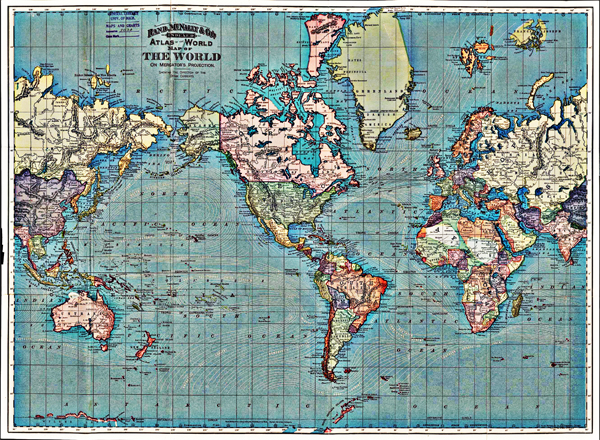
Have you ever tried smashing a ball into a flat rectangle?
Walk into any school classroom and you will likely see a flat, rectangular map of the world sprawled across the wall. Generations of children have grown up learning that this projection is what Earth looks like. But does this flat map really reflect what our planet is like?
Though designed with the best of intentions - to provide a detailed and coherent projection of Earth - flat maps are far from accurate; some areas look far bigger than they really are, others appear much smaller, and distances between various land masses are misrepresented.
“Every world map is distorted in some respect”, Matthew Edney, a professor of geography and the history of cartography at the University of Southern Maine.
“It's a question of what you want”, he said. “Do you want the regions to be shaped as they are on a globe, or sized as they are on a globe? For most purposes, the latter is much more appropriate, but the aesthetic of the former is still culturally hegemonic.”
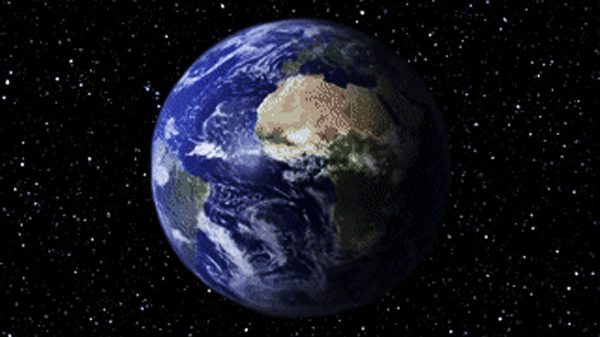
Despite the protestations of flat-Earthers, our home planet is not flat - it is technically an oblate spheroid - a sphere with a flattened top and bottom and a bulge along the equator.
This has, since the dawn of mapping, presented a major problem for cartographers: How can a three-dimensional object be faultlessly represented in two dimensions?
If you've got a spare globe, or an old tennis ball, try cutting it open and rearranging it into a perfect rectangle - this impractical challenge will give you a good idea of just how incompatible a spheroid and a flat rectangle are.
The Mercator projection, created by Flemish geographer and cartographer Gerardus Mercator in 1569, was a revelation half a millennium ago and remains the most widely used flat depiction of Earth, according to MapHover. This map was favored by navigators for centuries because it enabled them to plot courses in a straight line.
In terms of precision, however, it leaves a lot to be desired.
“Some projections distort more than others”, Edney said. “Mercator's projection is the classic example. The projection is conformal and also has the special property that great circles are straight lines”, Edney said.
A great circle is “defined as any circle drawn on a globe with a center that includes the center of the globe”, according to ThoughtCo, an educational resource website.
“This combination of properties”, continued Edney, “produces significant areal distortions. On the globe, meridians converge as they approach a pole, and the lengths of parallels of latitude grow shorter until the pole. But, when mapping the Earth into a rectangle, the poles are stretched from points into lines the length of the equator. Every parallel is stretched to the length of the equator, so on the map, there is horizontal stretching as one moves poleward.”
“On the globe, parallels are equally spaced, but to get the special property of great circles and straight lines, Mercator's projection exponentially increases the separation of parallels as one moves poleward. On the map, therefore, there is increasing vertical stretching as one moves poleward.”
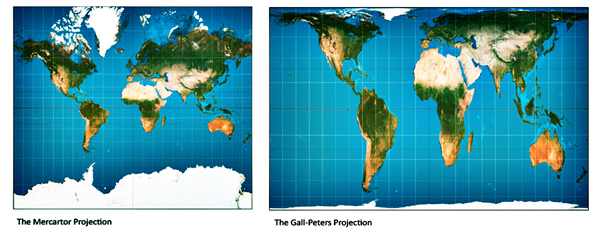
The result of this is that some regions look far bigger on the map than they are in reality, while others are drawn much smaller.
“This distortion is usually described in terms of the relative sizes of Greenland, Europe, Africa and India - the former two shown ‘larger’ than they should be, the latter pair much smaller. Again, all is relative.”
To put this in context, Greenland and Africa appear to be similar in size on the Mercator projection, when in reality Africa is nearly 14 times larger, according to Scientific American. Similarly, Alaska is represented as being around three times bigger than Mexico, when in fact Mexico is around 1.3 times bigger.
So, given the Mercator projection is flawed when it comes to its capacity to represent size, are there any other world maps that we should be using instead?
“One alternative to Mercator's projection that was popularized in the 1970s and 1980s is the Gall-Peters projection, which is equal-area, but quite ugly”, Edney said. “My academic grandfather, Arthur Robinson, said it made the continents look like long underwear hung on a line to dry.”
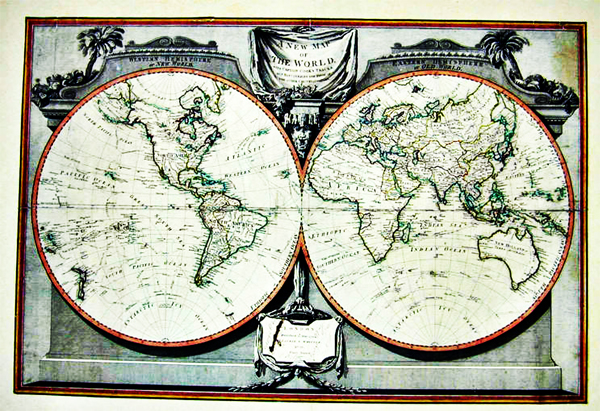
This projection has its own accuracy issues. Though all areas are the correct size relative to each other, most land masses are distorted in order to make it so. Land masses appear stretched - horizontally at the poles and vertically at the Equator - meaning that, though countries are roughly the correct size, they are by no means the right shape. This distortion is, as with the Mercator projection, most prominent at the poles.
Various other flat maps have been drawn over the centuries, but they all have the same issue: It is impossible to portray the 3D Earth on a 2D map without compromise. The Winkel Tripel projection, designed in 1921, is the National Geographic Society's preferred flat map, but even this has issues with distortion, particularly regarding the Pacific Ocean, which looks vaster on this map than it is in reality.
This map is favored by National Geographic because, when compared to other small-scale maps, there is less distortion. It is known as a “compromise projection” because, while it doesn't entirely eliminate the common flat map distortions regarding area, direction or distance, it minimizes them as much as possible. This ultimately means that almost every part of the map is distorted in some way, just not excessively.
In 2021, astrophysicists produced what is believed to be the most accurate flat map of Earth ever, as reported by Live Science. It consists of two "pancake maps" that can be viewed side by side or back to back. This way of presenting Earth is fundamentally different to nearly every other flat map, and it remains to be seen if it will be widely adopted for use in textbooks and on classroom walls.
“I would like it if all map publishers went to equal-area projections”, Edney said. “But ultimately it's a matter of what sells.”
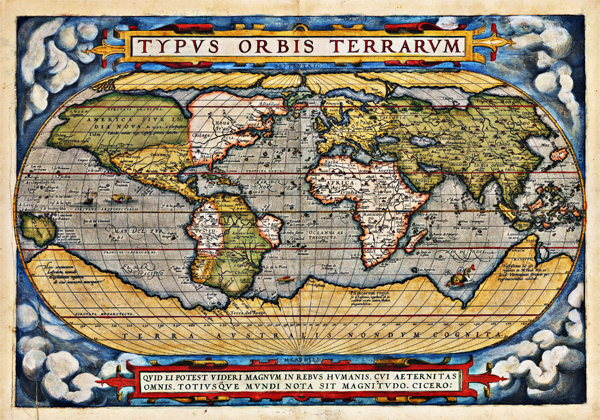
A Landmark 16th Century World Map by the Man who Invented the Atlas... Abraham Ortelius (Typus Orbis Terrarum), 1570 (Published) Antwerp
Related: What is the oldest-known archaeological site in the world?
Columbus “Discovered” the New World … so why isn't America named after him?
Would I weigh less at the equator?
When did Constantinople become Istanbul?
Live Science (01/15/2022) 


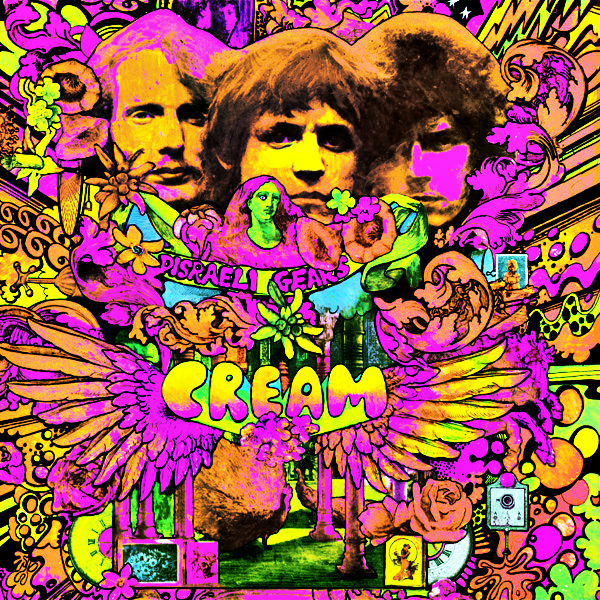
“Sunshine of Your Love” - Cream
Album: Disraeli Gears
Released 1967 
“Sunshine Of Your Love”  lyrics were written by Pete Brown, a beat poet who was friends with Ginger Baker and Jack Bruce.
He also wrote lyrics for
“I Feel Free”
lyrics were written by Pete Brown, a beat poet who was friends with Ginger Baker and Jack Bruce.
He also wrote lyrics for
“I Feel Free”  and
“White Room”
and
“White Room”  . Eric Clapton and Jack Bruce wrote the music.
. Eric Clapton and Jack Bruce wrote the music.
Jack Bruce's bass line carries the song. He got the idea for it after going to a Jimi Hendrix concert. When Kees van Wee interviewed Bruce in 2003 for the Dutch magazine Heaven, Kees asked him which of his many songs epitomizes Jack Bruce the most. At first he was in doubt whether he should answer
“Pieces Of Mind”  or
“Keep On Wondering”
or
“Keep On Wondering”  , but then he changed his mind and opted for
“Sunshine Of Your Love”
, but then he changed his mind and opted for
“Sunshine Of Your Love”  .
Because, Said Bruce, “It's based on a bass riff. And when you enter a music shop this is the song that kids always play to try out a guitar.”
.
Because, Said Bruce, “It's based on a bass riff. And when you enter a music shop this is the song that kids always play to try out a guitar.”
Pete Brown wrote the opening line after being up all night working with Bruce and watching the sun come up. That's were he got, “It's getting near dawn, when lights close their tired eyes.”
Tom Dowd, who worked with most of the artists for Atlantic Records at the time, engineered the Disreali Gears album. Dowd was renowned for his technical genius, but also for his ability to relate to musicians and put them at ease.
When Cream recorded this song, it wasn't working. In the documentary Tom Dowd And The Language Of Music, he explained:
“There just wasn't this common ground that they had on so many of the other songs. I said, 'Have you ever seen an American Western where the Indian beat - the downbeat - is the beat? Why don't you play that one.”
“Ginger went inside and they started to run the song again. When they started playing that way, all of the parts came together and they were elated.”
According to Rolling Stone magazine's Top 500 songs issue, Jack Bruce knew the song would do well. “Both Booker T. Jones and Otis Redding heard it at Atlantic Studios and told me it was going to be a smash”, he recalled.
One man who was not impressed was Ahmet Ertegun, who was head of the group's label. When Bruce revealed the song at the sessions, Ertegun declared it “psychedelic hogwash”. Ertegun constantly tried to promote Eric Clapton as the band's leader, and also didn't believe the bassist should be a lead singer. He only relented and agreed to champion this song after Booker T. Jones came by and expressed his approval.
This is one of Eric Clapton's favorites from this days with Cream; he played it at most of his solo shows throughout his career. When Cream played some reunion concerts in 2005, they played the song as their encore.
Jimi Hendrix covered
“Sunshine Of Your Love”  at some of his concerts, unaware that he was the inspiration for the bass line.
at some of his concerts, unaware that he was the inspiration for the bass line.
Hendrix did an impromptu performance of the song when he appeared on Happening for Lulu, BBC TV show in England hosted by the prim and proper “To Sir With Love” singer. After playing part of his scheduled song
“Hey Joe”  , Hendrix stopped the performance and said,
, Hendrix stopped the performance and said,
“We'd like to stop playing this rubbish and dedicate a song to the Cream, regardless of what kind of group they may be in. We dedicate this to Eric Clapton, Ginger Baker and Jack Bruce.”
This version appears on the Experience Hendrix 2CD/3LP The BBC Sessions towards the end of Disc 2/Side 6 on the LP. An instrumental version appears on the 2010 Valleys of Neptune album, which was recorded by Hendrix at London's Olympic Studios on February 16, 1969.
Hendrix engineer and producer Eddie Kramer recalled to Toronto's The Globe and Mail:
“Jimi loved Cream, he loved Eric Clapton. It was a fabulous song, he loved to play it, and he would just rip into it whenever the mood hit him.” (thanks, Jippers - Gosford, Australia)
This was Cream's biggest hit. It was their first to do better in the U.S. than in the UK, as they started to catch on in America. In the U.S., this first charted in February 1968 at #36. In August, after the album came out, it re-entered the chart and went to #5.
Clapton's guitar solo is based on the '50s song
“Blue Moon”  .
.
Excepting
“Strange Brew”  , the “Disraeli Gears album was recorded in just three days, as the band had to return to England because their work visas were expiring.
Engineer Tom Dowd recalls the sessions coming to an abrupt end when a limo driver showed up to take the musicians to the airport. Dowd was tasked with mixing the album in their absence.
, the “Disraeli Gears album was recorded in just three days, as the band had to return to England because their work visas were expiring.
Engineer Tom Dowd recalls the sessions coming to an abrupt end when a limo driver showed up to take the musicians to the airport. Dowd was tasked with mixing the album in their absence.
Cream played
“Sunshine Of Your Love”  at the Rock and Roll Hall of Fame on January 12, 1993 when they reunited for their induction. To that point, the only other time the band got back together was at Eric Clapton's wedding in 1979.
at the Rock and Roll Hall of Fame on January 12, 1993 when they reunited for their induction. To that point, the only other time the band got back together was at Eric Clapton's wedding in 1979.
Jack Bruce released a new version on his 2001 album
“Shadows In The Air”  . Clapton played on it along with Latin percussionists from New York City, which gave it a Salsa sound.
. Clapton played on it along with Latin percussionists from New York City, which gave it a Salsa sound.
MORE SONGS

1966
“I Feel Free”  Music Video
Music Video 
“White Room”  Live
Live 
“N.S.U. (“Non-Specific Urethritis”)”  Live
Live 
“Lawdy Mama”  Live
Live 
1967
“Sunshine of Your Love”  Music Video
Music Video 
“Outside Woman Blues”  Live
Live 
originally recorded by Blind Joe Reynolds in 1929 
“Strange Brew”  Live
Live 
“Steppin' Out”  Live
Live 
“Spoonful”  Live
Live 
“SWLABR (She Was Like A Bearded Rainbow)”  Music Video
Music Video 
“Tales Of Brave Ulysses”  Live
Live 
1968
“Crossroads”  Music Video
Music Video 
“White Room”  Live
Live 
1969
“Badge”  Live
Live 
Cream official site (Cream Discography) / Rock & Roll Hall of Fame / Billboard / All Music / Song Facts /
Ultimate Classic Rock / Cream
Image: “Disraeli Gears (album)” by Cream

Trivia
● What is the fear of politicians known as?
Answer to Trivia
READ MORE: Psych Times
● What small carrier attached to a motorcycle shares its name with a brandy cocktail?
Answer to Trivia
READ MORE: Liquor.com
● How many squares are there on a checkerboard?
Answer to Trivia
READ MORE: Mathigon.org
● Which book of the Bible follows Exodus?
Answer to Trivia
READ MORE: Bible Study Tools
● Pubs are said to have evolved from what Anglo-Saxon establishment that started to appear in the 5th century?
Answer to Trivia
READ MORE: Historic-UK

A Test for People Who Know Everything
From the Jeopardy Archives Category - “CHECK YOUR CALENDAR” ($200)
“Colorful nickname for November 27, 2020, knowing that Thanksgiving is November 26.”
Answer to Jeopardy READ MORE: History.com
From the Jeopardy Archives Category - “CHECK YOUR CALENDAR” ($400)
“You are this sign of the zodiac if your birthday falls between December 22 & January 19.”
Answer to Jeopardy READ MORE: Encyclopedia Britannica
From the Jeopardy Archives Category - “CHECK YOUR CALENDAR” ($600)
“Bastille Day, Parents' Day & Independence Day are all observed during this month.”
Answer to Jeopardy READ MORE: National Day Calendar
From the Jeopardy Archives Category - “CHECK YOUR CALENDAR” ($800)
“Place your bets - this sporting event established in 1875 takes place the first Saturday in May.”
Answer to Jeopardy READ MORE: DerbyMuseum.org
From the Jeopardy Archives Category - “CHECK YOUR CALENDAR” ($1,000)
“Commemorating an event from 1777, June 14 is this holiday.”
Answer to Jeopardy READ MORE: History.com

Joke of the Day

Pulled Over By A London Cop
Two men are driving through London when they get pulled over by a cop.
The cop walks up and taps on the window with his stick.
The driver rolls down the window and WHACK, the officer smacks him in the head with the stick.
The driver asks, “What the hell was that for?”
The officer answers, “You're in London son. When we pull you over, you better have your license ready when we get to your car.”
The driver says, “I'm sorry, Officer, I'm not from around here.”
The officer does a check on the driver's license, and he's O.K.
He gives the man his license back, walks around to the passenger side and taps on the window.
The passenger rolls down the window and WHACK, the officer smacks him on the head with the stick.
The passenger asks, “What'd you do that for?”
The officer says, “Just making your wish come true.”
The passenger asks, “Making what wish come true?”
The officer says, “I know that two miles down the road you're gonna say to your friend here, I wish that a*shole would've tried that sh*t with me!”










































